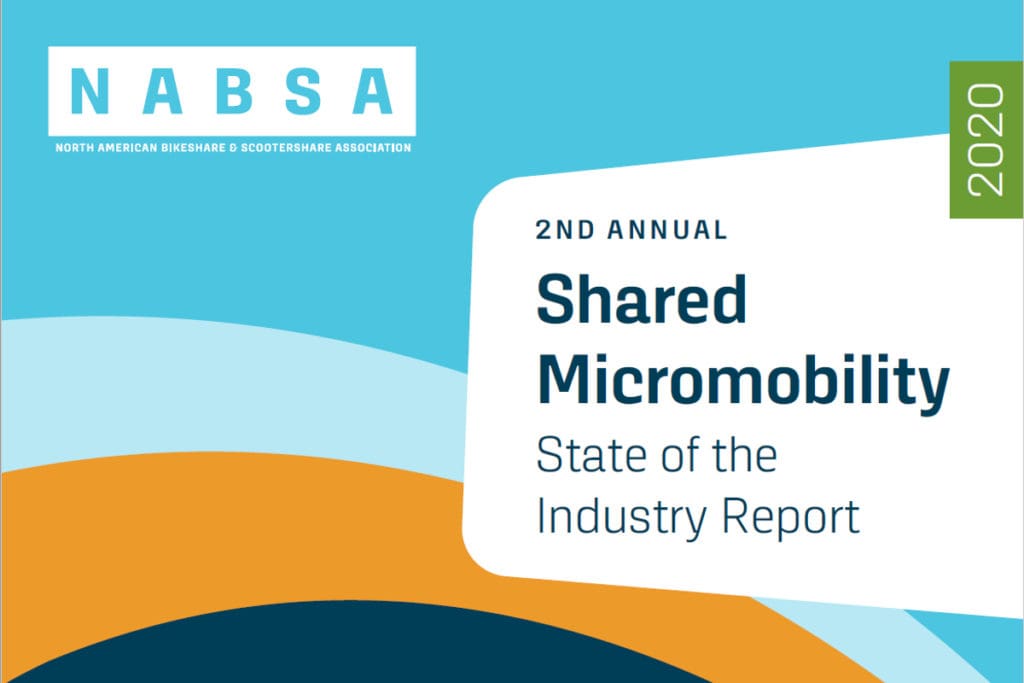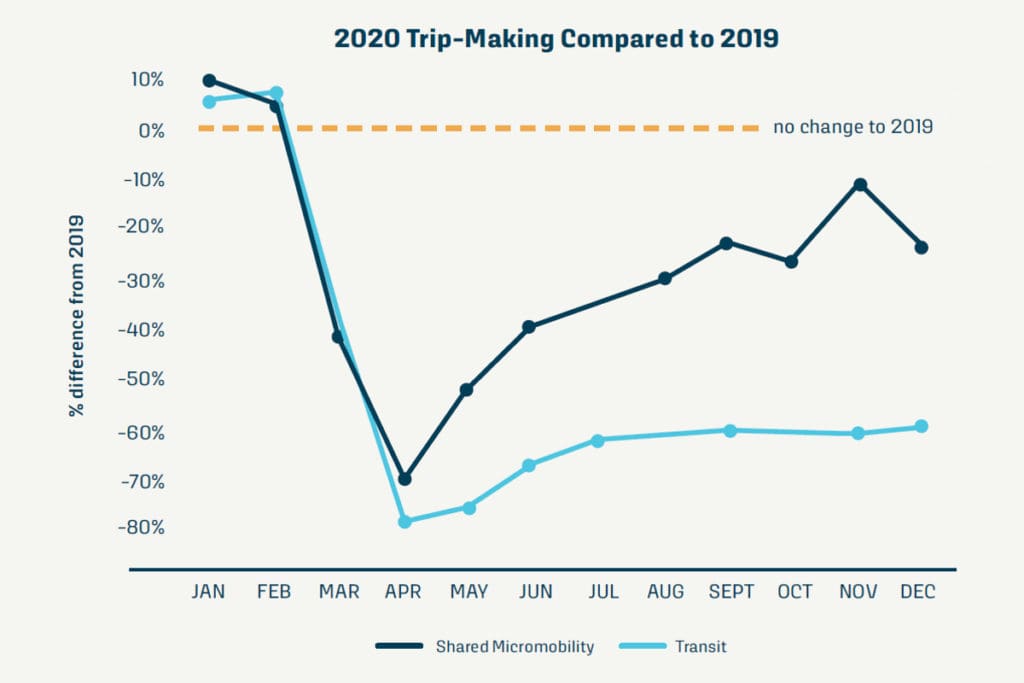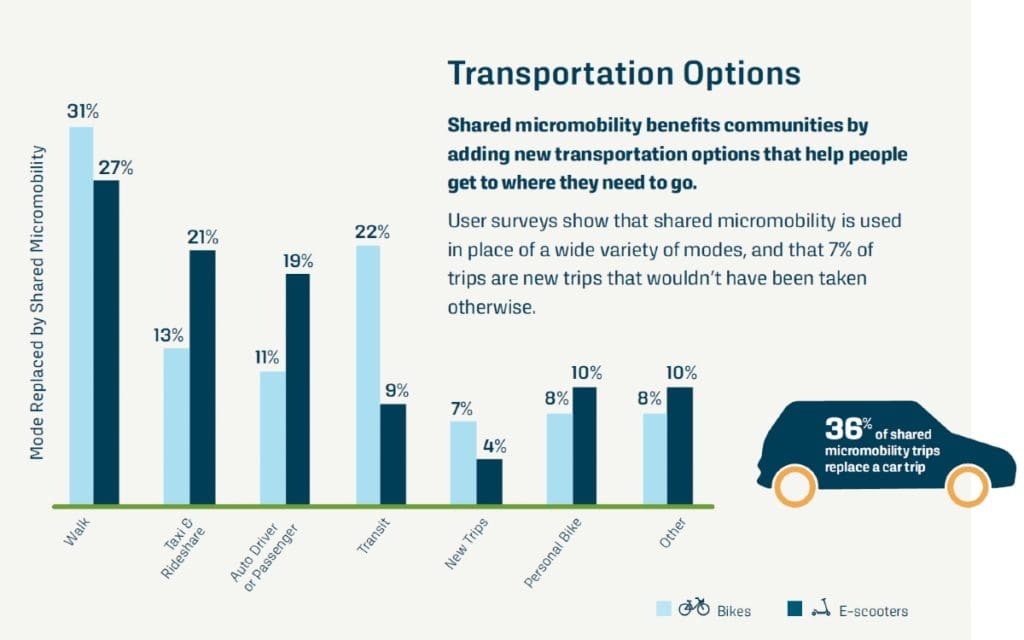E-Bikes on the Rise for Embattled but Resilient North American Share Industry

Portland, Maine, USA
E-bikes have grabbed a much greater share of North American micromobility share systems, at a time when COVID put the brakes on the industry as a whole, according to the North American Bikeshare Association (NABSA) 2020 annual report.
However, the report study also found share system operators showed great resilience against the considerable impacts of COVID and in many cases came to the rescue of their communities.
The second annual NABSA report says the number of e-bike trips increased from seven million in 2019 to almost 10 million trips last year, despite all other trip trends reducing during the COVID-19 pandemic.
The total number of share trips fell to an estimated 83.4 million trips, just over half the 2019 total. Some of that fall could be attributed to a 22% decline in the total number of North American cities with at least one micromobility share system, from 292 to 224.
Bucking the trend, the proportion of bikeshare system operators providing e-bikes grew from 28% to 44%.
There was a total of 167 city bikeshare systems in 2020, a mix of docked, dockless and hybrid systems.
A total of 129 e-scooter systems operated in North American cities in 2020 – all dockless and electric – and they comprised one third of all the share trips.
“2020 was a tough year for everyone but the shared micromobility industry proved its resilience”
Industry resilience
“During the height of the pandemic, some systems and regulators made the decision to suspend service due to health concerns,” the report says.
However, US Department of Transportation statistics show 75% of those suspended systems were reopened by the end of the year, a faster rebound than other share modes.
“2020 was a tough year for everyone but the shared micromobility industry proved its resilience and played an important part in keeping North America moving by providing programs and service where it was most needed,” the report says.
Micromobility share system operators then came to the aid of their host cities, as:
- 65% provided programs for essential workers such as discounted or free rides
- 55% worked with transit agencies to fill gaps left by transit service reductions
- 30% explored daily or monthly rental services
- 25% integrated local restaurants and businesses into apps or other programs
- 15% provided or partnered with delivery services
- One-third reduced or waived user fees
There was further good news amid the challenges of 2020. Approximately half of agencies and operators reported an increase in first-time riders, while almost 60% noted positive trends in recreational and casual journeys.
The annual report offers a snapshot of an evolving micromobility share ride industry in the US.
NABSA – a nonprofit organisation dedicated to providing resources, education, and advocacy for the shared micromobility industry – collected data across a wide variety of topics, including ridership metrics, user profiles, employment, equity, and community benefits.
It distributed surveys to all known shared micromobility operators and agencies.
This year’s report shows there were 203 US cities, 14 Mexican cities and seven in Canada with at least one bikeshare or e-scooter system, while 72 had both.
A quarter of operators only offered shared e-scooters, while 42% stuck to bikeshare only and 33% offered both.
Changes in User Behaviour
The study found changes in the way people used shared micromobility:
• approximately two-thirds reported a reduction in weekday trip-making
• more than 60% reported changes to the times of day that trips were made
• almost 50% reported an increase in weekend trip-making
• over 20% noticed increased trips to destinations near essential services
According to the report, micromobility shared systems made major inroads towards healthier communities.
North Americans gained almost 12.2 million hours of additional physical activity through shared micromobility, by creating new trips and replacing motorised trips. They racked up 6.5 million hours on pedal bikes, 1.8 million hours on e-bikes and 3.9 million hours on e-scooters.
It estimates 36% of shared micromobility trips replace a car trip, offsetting approximately 29 million pounds of CO2 emissions by replacing vehicle use.
Investigations into why people ride found the top reasons were: fun, saving money, faster and easier travel, and more flexible travel options.
Users were also very mindful of the health and environmental benefits, as well as the reduction in traffic and parking congestion.
The study’s statistics also found micromobility share systems gained a much broader appeal in 2020, beyond the middle-income white male. For example, while women, people on low or high incomes and members of the Black and Hispanic communities were notably underrepresented in the user numbers in 2019, they were more likely to have utilitised share scooters or share bikes in 2020.


